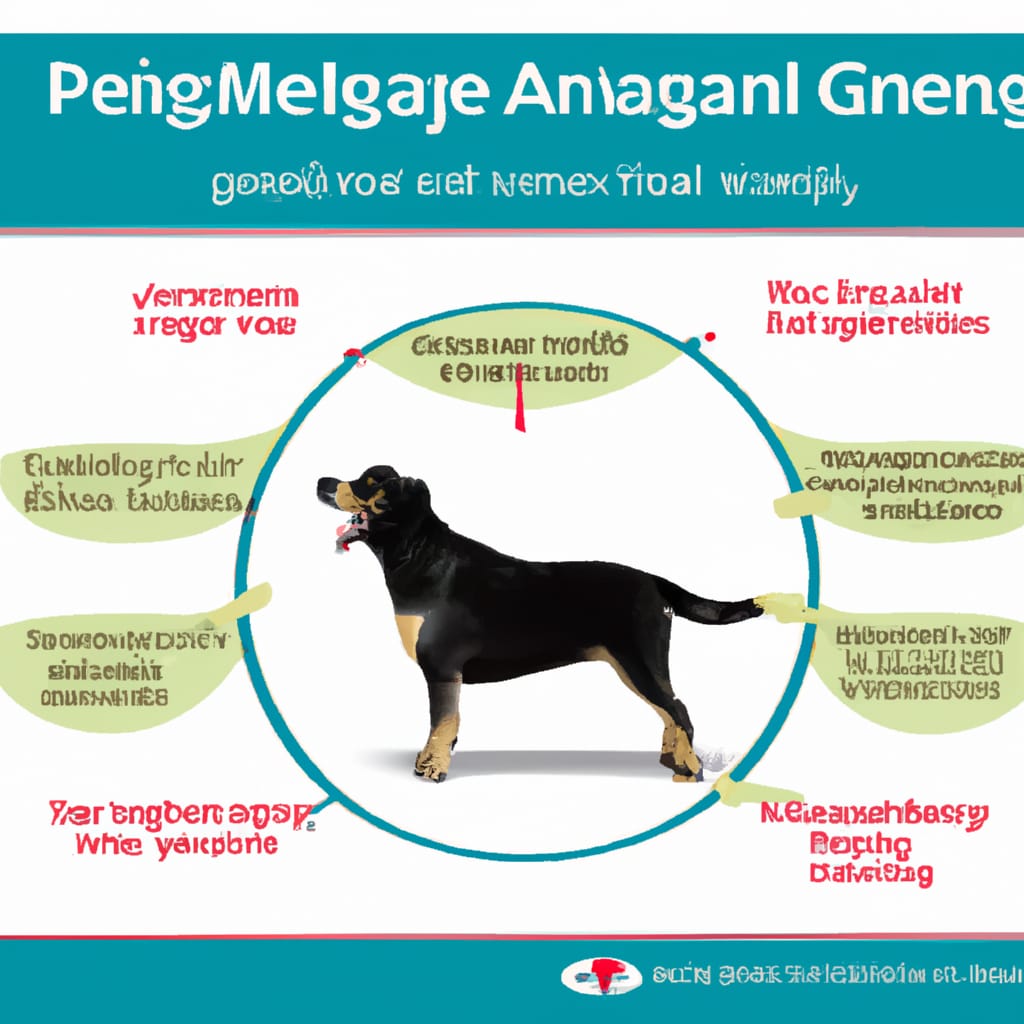How Long Are Dogs Pregnant?
If you’ve ever wondered about the journey of bringing a new life into this world, specifically when it comes to dogs, you’re in the right place. In this article, we’ll explore the fascinating topic of how long dogs are pregnant for. From the remarkable stages of canine pregnancy to the signs to look out for, get ready to embark on a furry adventure as we unravel the mysteries surrounding the gestation period of our four-legged friends. So, grab your favorite squeaky toy, and let’s dive into the wonderful world of dog pregnancy!
The Gestation Period of Dogs
Determining the Length of Dog Pregnancy
Are you curious about how long dogs are pregnant? Understanding the gestation period of dogs is important if you have a pregnant dog or if you’re considering breeding your dog. Knowing the estimated due date of your dog’s litter can help you prepare for the arrival of the puppies and ensure a smooth birthing process.
Determining the length of dog pregnancy can be done through various methods, including veterinary diagnosis and observing physical and behavioral changes in your dog. Let’s explore these methods in more detail.
Normal Gestation Period
The gestation period refers to the time from the moment of fertilization to when the puppies are born. On average, the gestation period for dogs ranges from 58 to 68 days. However, every dog is unique, and there can be variations in the length of pregnancy depending on several factors.
Factors Affecting Gestation Period
Several factors can influence the gestation period of dogs. One important factor is the breed of the dog. Different breeds may have slightly different gestation periods. Generally, smaller breeds tend to have shorter gestation periods, while larger breeds may have longer ones.
The health and age of the dog can also affect the length of pregnancy. Dogs that are in good overall health and at their optimal reproductive age are more likely to have a normal gestation period. It is important to note that some medical conditions or genetic factors can also influence the length of pregnancy.
Understanding Dog Reproduction
Canine Reproductive Anatomy
To understand dog pregnancy, it is essential to have a basic understanding of canine reproductive anatomy. Female dogs have two ovaries, where eggs are produced. During the estrus cycle, which we will explore in the next section, one of the ovaries releases an egg, which then travels through the fallopian tube.
If the egg is fertilized by sperm from a male dog during this journey, it implants in the uterus, and pregnancy begins. The uterus is where the puppies develop and grow until they are ready to be born.
The Estrus Cycle in Dogs
The estrus cycle, also known as the heat cycle, is a crucial part of dog reproduction. This cycle refers to the period when the female dog is fertile and receptive to mating. The cycle consists of four stages: proestrus, estrus, diestrus, and anestrus.
During proestrus, the female dog experiences vaginal bleeding and swelling as her body prepares for mating. This stage typically lasts for around 9 days. It is important to note that while bleeding is a common sign of proestrus, it does not indicate pregnancy.
The estrus stage follows proestrus and is the period when the female dog is fertile and ready to mate. This stage usually lasts around 5-13 days. During this time, the female may exhibit behaviors such as increased urination, restlessness, and attraction to male dogs.
After estrus comes diestrus, which is the stage where the female dog’s body prepares for pregnancy. If fertilization occurs, this stage will last for the duration of the pregnancy. If fertilization does not occur, diestrus will last for around 60 days, and the female dog will enter anestrus, a period of sexual inactivity.
Mating and Fertilization
Mating between a male and a female dog occurs during the estrus stage of the female’s heat cycle. It is crucial to carefully plan and supervise the mating process to ensure a successful breeding and healthy pregnancy.
When a male dog mates with a female dog, he deposits sperm into the female’s reproductive tract. From there, the sperm journey through the fallopian tubes, where they may encounter the released egg. If fertilization occurs, the fertilized egg will implant in the uterus, marking the beginning of pregnancy.

Determining the Length of Dog Pregnancy
Methods to Confirm Canine Pregnancy
Confirming canine pregnancy can be done through several methods. The most accurate way is to seek veterinary diagnosis. Your veterinarian can perform various tests, including ultrasound or hormone analysis, to determine if your dog is pregnant.
Alternatively, you can keep an eye out for physical and behavioral changes in your dog, which can provide some indication of pregnancy. However, these signs are not always reliable, and a veterinarian’s confirmation is still recommended for an accurate diagnosis.
Veterinary Diagnosis
As mentioned earlier, seeking veterinary diagnosis is the most reliable method to confirm canine pregnancy. Your veterinarian can use ultrasound to visualize the developing puppies and determine their number. Hormone analysis, such as measuring progesterone levels, can also provide valuable information regarding pregnancy.
It is important to consult your veterinarian early in the pregnancy to ensure proper prenatal care for your dog. They will be able to monitor the progress of the pregnancy and advise you on any necessary steps to take to ensure the health and well-being of both the mother and her puppies.
Physical and Behavioral Changes
While not definitive, there are some physical and behavioral changes you can observe in your dog that may indicate pregnancy. Around three weeks after mating, you might notice some changes in her nipples, which can become enlarged and darker in color. Additionally, her abdomen may start to swell gradually as the puppies grow.
Behaviorally, pregnant dogs may experience changes in appetite and energy levels. Some dogs may become more affectionate or seek more attention from their owners. However, it is important to remember that these signs can also be attributed to other factors, such as illness or hormonal changes.
The Normal Gestation Period
Average Pregnancy Length in Dogs
On average, a dog’s pregnancy lasts approximately 63 days. However, it is important to note that this is just an average, and individual pregnancies can vary. It is best to consult with your veterinarian to determine the expected due date for your dog’s pregnancy.
Variations by Breed and Size
The length of pregnancy can vary based on the breed and size of the dog. Smaller breeds tend to have shorter gestation periods compared to larger breeds. For example, toy breeds may have a gestation period as short as 58 days, while larger breeds can have a gestation period closer to 70 days. Knowing the breed-specific variations can help you prepare accordingly and anticipate the arrival of the puppies.
Potential Complications
While most dog pregnancies progress smoothly, there can be potential complications that may arise. It is crucial to monitor your dog closely throughout her pregnancy and seek veterinary attention if any concerning signs or symptoms occur.
Some potential complications during pregnancy include uterine infections, pregnancy loss or miscarriage, and conditions such as eclampsia, also known as milk fever. It is important to work closely with your veterinarian to ensure the health and well-being of your pregnant dog and her puppies.

Early Stages of Dog Pregnancy
Signs of Early Dog Pregnancy
The early stages of dog pregnancy are an exciting time as the new life begins to develop. While physical signs may not be obvious during the first few weeks, there are some signs you can look for to identify potential pregnancy.
One of the earliest signs is changes in behavior and appetite. Some dogs may become more affectionate or display nesting behaviors, while others may experience a decrease in appetite or even morning sickness. However, these signs can be subtle, and it is best to consult your veterinarian for an accurate diagnosis.
Embryo Development
During the first few weeks of pregnancy, the embryos develop rapidly. The fertilized eggs divide and multiply, forming balls of cells called blastocysts, which will eventually become puppies.
It is fascinating to note that around 21-30 days after mating, your veterinarian may be able to detect the presence of embryos through ultrasound examination. This is a crucial time to provide proper prenatal care, including a balanced diet and regular veterinary check-ups.
Understanding Embryo Implantation
Around 20 to 24 days after mating, the blastocysts will attach or implant into the lining of the uterus. This process is called embryo implantation and is a critical step in the development of the pregnancy. Once implanted, the embryos are nourished by the mother’s body and continue to grow until they are ready to be born.
Mid to Late Stages of Dog Pregnancy
Physical Changes in a Pregnant Dog
As the pregnancy progresses, you may start to notice more evident physical changes in your pregnant dog. Around the 30-day mark, her abdomen will become visibly larger due to the growing puppies. The nipples may continue to enlarge and may start to produce milk as the due date approaches.
It is important to provide your pregnant dog with a comfortable and safe environment during this time. Providing her with a well-padded and clean whelping area will ensure her comfort and support her during the upcoming labor and delivery process.
Nesting Instinct and Preparing a Whelping Area
Just like human mothers-to-be, pregnant dogs also exhibit a nesting instinct. As the due date approaches, your dog may start to seek out a quiet and secluded area where she can give birth and care for her puppies.
It is important to create a designated whelping area that is warm, quiet, and free from distractions. Make sure the area is easily accessible for you to monitor the birthing process while maintaining the privacy and comfort of the mother.
Growth and Development of Puppies
During the mid to late stages of dog pregnancy, the puppies continue to develop and grow at a rapid pace. Their size and features become more apparent, and they start to resemble tiny puppies.
It is crucial to provide proper nutrition and care during this stage to support the healthy growth of the puppies. Your veterinarian will guide you on the appropriate diet and supplements needed for your pregnant dog to ensure optimal health for both her and the puppies.
Labor and Delivery in Dogs
Signs of Approaching Labor
As the due date approaches, there are several signs that indicate your dog is approaching labor. Some common signs include restlessness, pacing, panting, and nesting behavior. Your dog may also start to lose her appetite and may vomit. These signs are indicative that labor is imminent, and it is essential to be prepared for the upcoming delivery.
Stages of Canine Labor
Canine labor consists of three distinct stages. The first stage is the preparatory stage, where the dog may exhibit nesting behavior and start to have mild contractions. This stage can last several hours or even up to a day, as the mother’s body prepares for the delivery of the puppies.
The second stage is the active stage of labor. During this stage, the mother will experience strong and visible contractions as she delivers each puppy. The time between delivering each puppy can range from a few minutes to up to an hour. It is important to monitor the progress of labor and contact your veterinarian if there are any concerns or signs of complications.
The third stage of labor involves the delivery of the placentas or afterbirth. Each placenta should be delivered shortly after the corresponding puppy. It is crucial for the mother to expel all the placentas, as retained placentas can lead to complications.
Whelping Assistance and Care
In most cases, dogs are capable of delivering their puppies without human assistance. However, it is essential to provide support and assistance if needed. If a puppy is stuck in the birth canal for an extended period or if the mother is experiencing difficulties, it is crucial to seek veterinary help immediately.
During and after labor, it is important to maintain a clean and quiet environment for the mother and her puppies. Avoid unnecessary handling of the newborn puppies and provide the mother with fresh water and food to support her recovery.
Postpartum Period and Caring for Newborns
Immediate Care for Newborn Puppies
After the delivery of the puppies, immediate care is vital to ensure their health and survival. The mother will instinctively clean each puppy by licking them, which helps stimulate their breathing and circulation. However, you can assist by gently drying each puppy with a clean towel to prevent them from getting chilled.
It is important to check each puppy for any abnormalities or signs of distress. Make sure each puppy is breathing and responsive. If you notice any concerns, seek veterinary assistance right away.
Maternal Bonding and Nursing
Maternal bonding between the mother dog and her puppies is crucial for their well-being. The mother will provide nourishment through nursing, and the puppies will receive essential colostrum, a nutrient-rich milk that boosts their immune system. This is why it is important not to separate the puppies from their mother unless advised by a veterinarian.
Observe the nursing puppies to ensure they are latching properly and gaining weight. If you notice any difficulties or concerns, consult your veterinarian for guidance.
Important Do’s and Don’ts for the First Weeks
During the first few weeks, there are some important do’s and don’ts to ensure the health and well-being of the mother and her puppies. Do provide a clean and safe environment for the family. Keep the whelping area warm, quiet, and free from drafts.
Do monitor the growth and development of the puppies. Regularly weigh them to ensure they are gaining weight appropriately. If you notice any signs of illness, contact your veterinarian immediately.
Don’t allow unnecessary handling of the puppies. Minimize stress and visitors during this crucial period. It is important to give the mother and her puppies time to bond and settle into a routine.
Potential Complications and Medical Intervention
Pregnancy Loss and Miscarriage
While rare, pregnancy loss or miscarriage can occur in dogs. Various factors can contribute to pregnancy loss, including genetic abnormalities, hormonal imbalances, infections, or trauma. If you suspect that your dog has experienced a miscarriage, it is essential to consult your veterinarian for proper evaluation and guidance.
Eclampsia (Milk Fever)
Eclampsia, also known as milk fever or puerperal tetany, is a potentially life-threatening condition that can occur during the postpartum period. It is caused by a sudden and dangerous drop in blood calcium levels in the mother dog. Signs of eclampsia include restlessness, panting, muscle tremors, and seizures.
If you notice any of these signs, it is crucial to seek immediate veterinary care. Eclampsia can progress rapidly and requires prompt medical intervention to save the mother’s life.
Cesarean Section (C-Section)
In some cases, a cesarean section (C-section) may be necessary to deliver the puppies. Certain factors, such as a narrow birth canal, oversized puppies, or complications during labor, may require surgical intervention. If your veterinarian determines that a C-section is necessary, it is essential to follow their recommendations and ensure a safe delivery for both the mother and her puppies.
Conclusion
Understanding the gestation period of dogs and the various stages of dog pregnancy is crucial if you own a pregnant dog or are considering breeding your dog. By familiarizing yourself with the signs and changes that occur throughout pregnancy, you can provide the necessary care and support for your dog and her puppies.
It is always recommended to work closely with your veterinarian throughout the pregnancy journey. Regular check-ups, proper nutrition, and a stress-free environment are key to ensuring a healthy and successful pregnancy. Remember to provide the mother and her puppies with the love, care, and attention they need during this special time.













